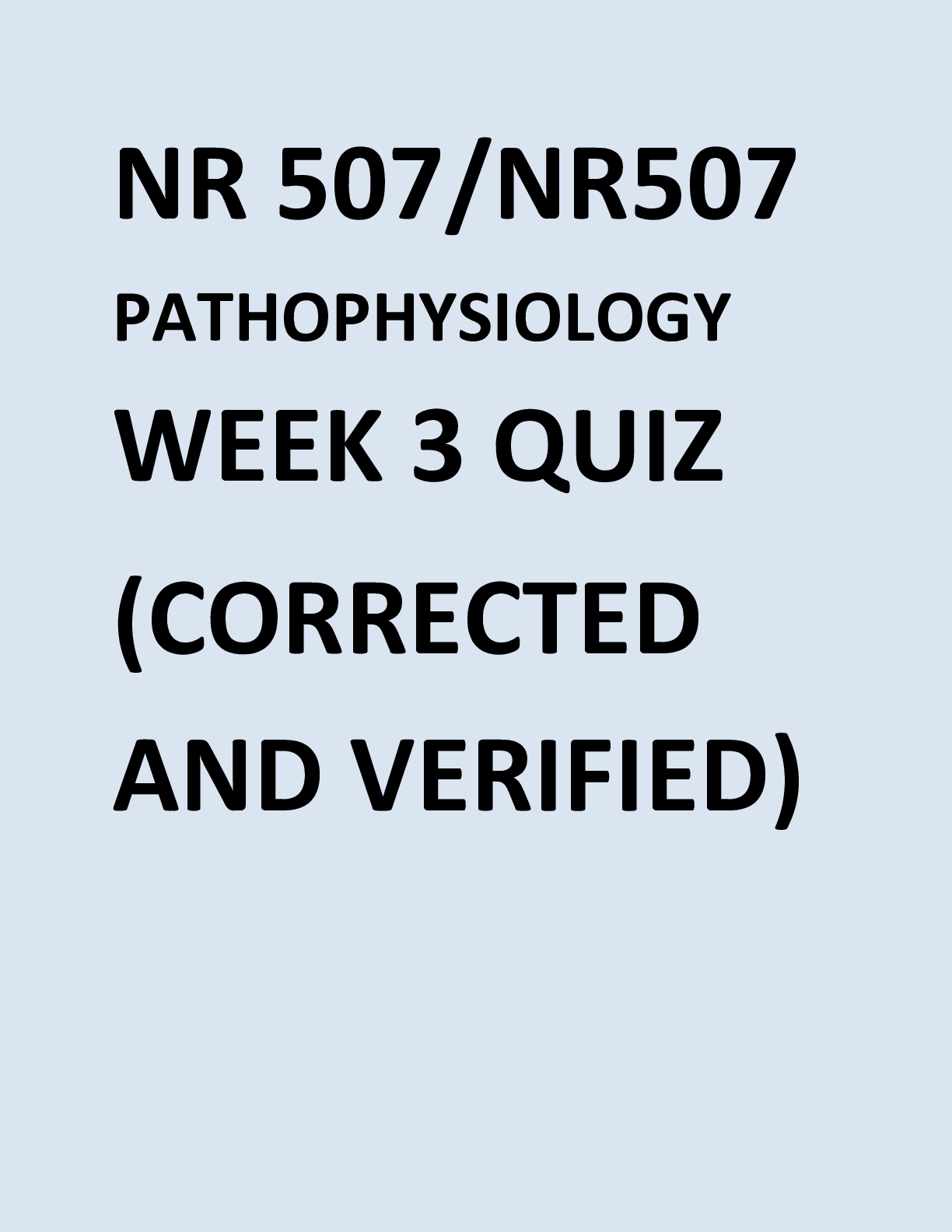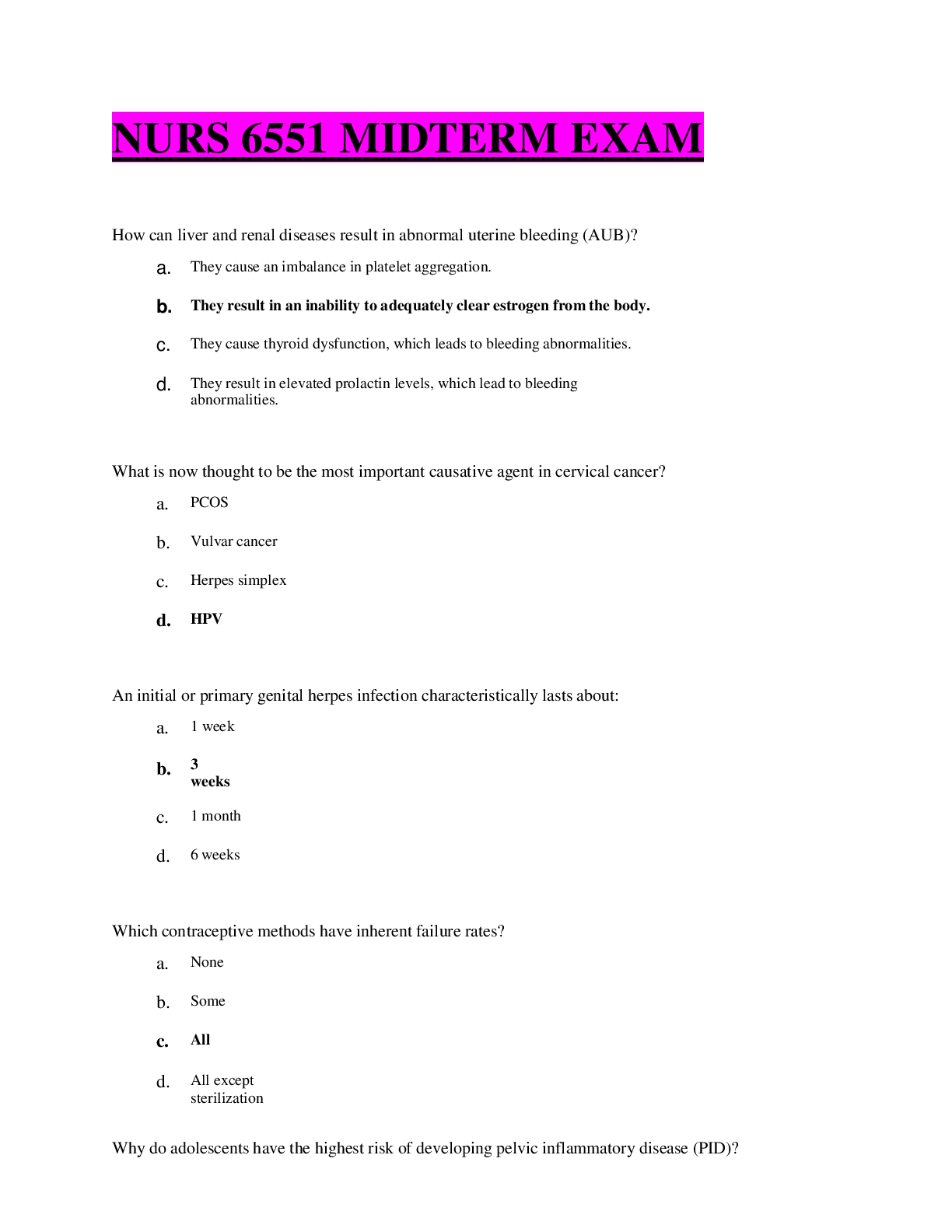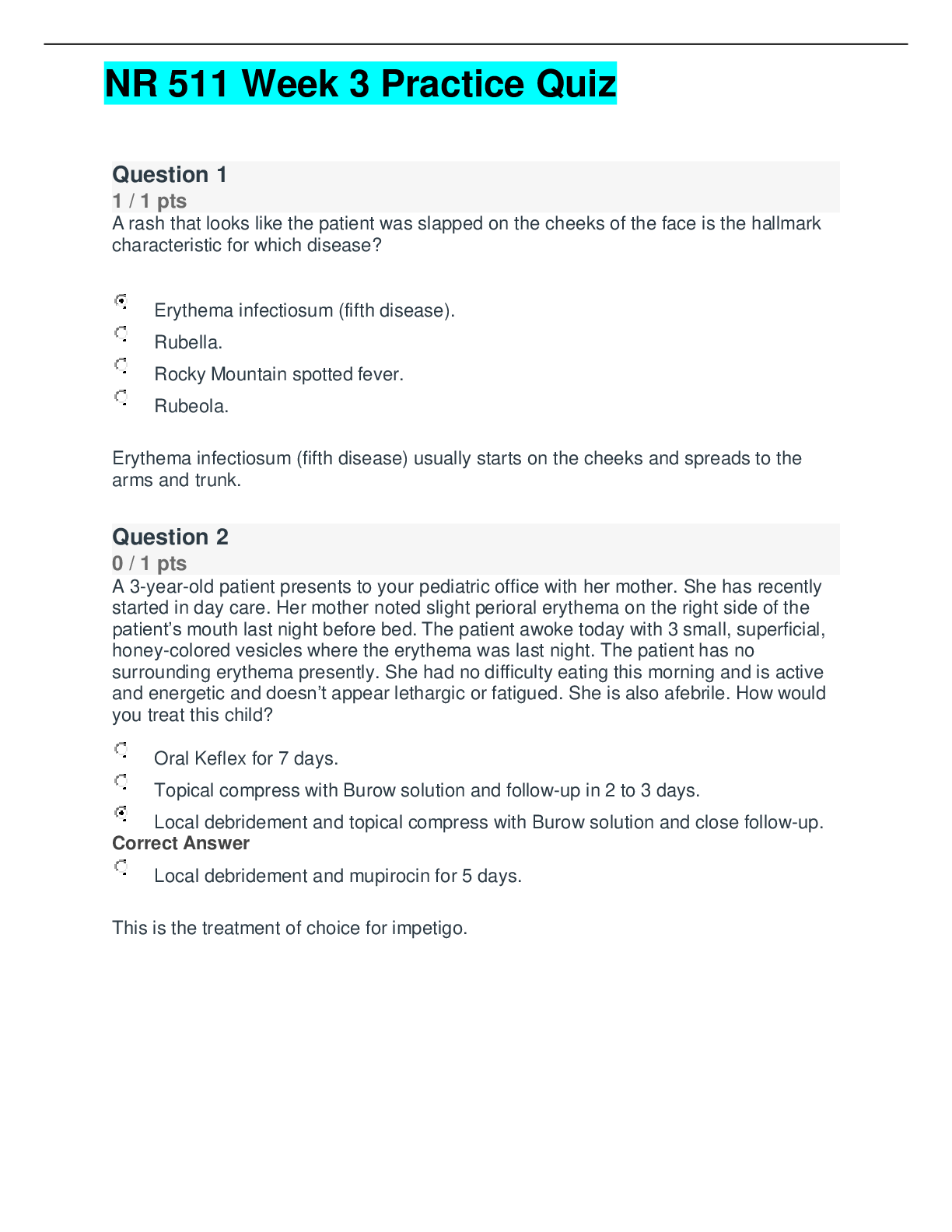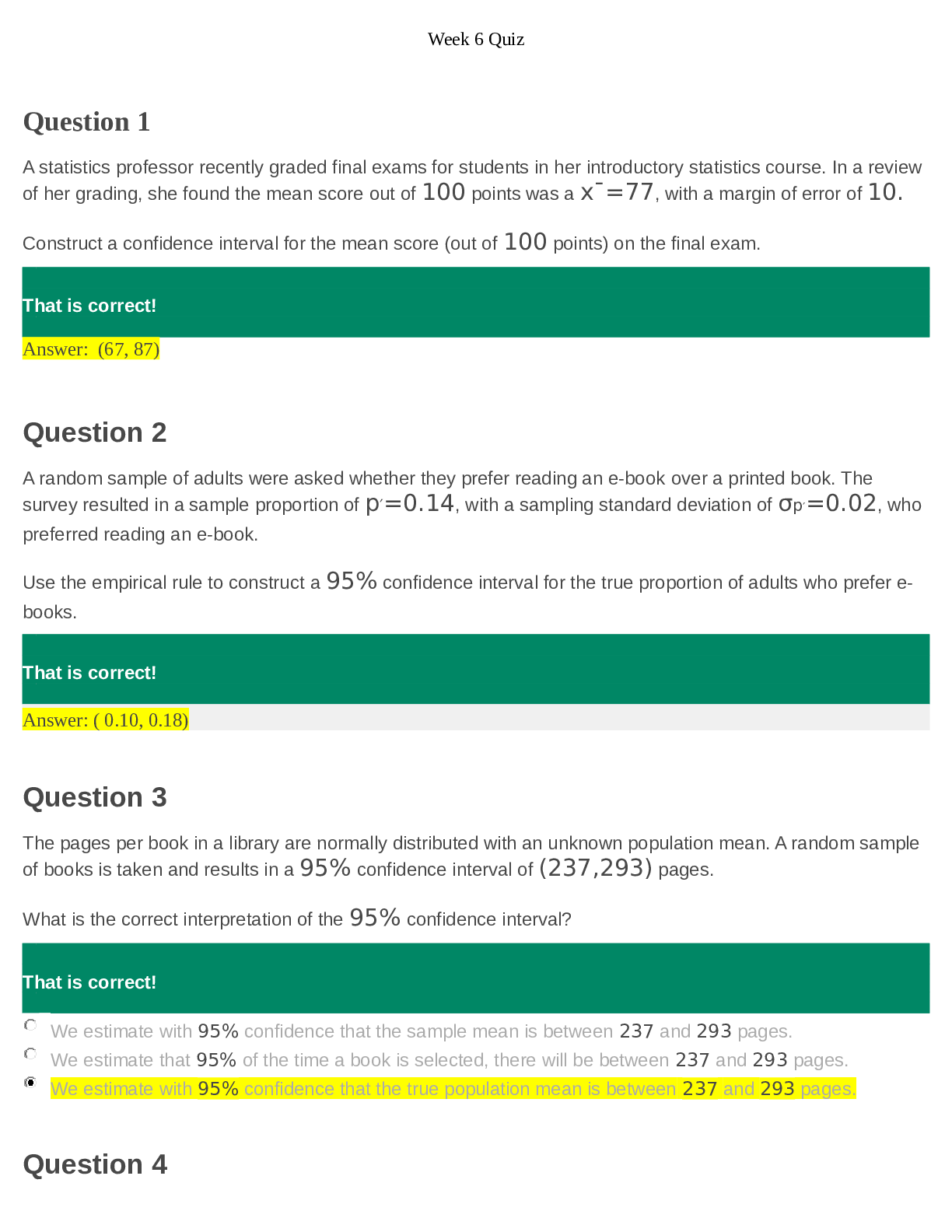*NURSING > QUESTIONS & ANSWERS > NR 509 Week 3 Quiz - Question and Answers. Grade A (All)
NR 509 Week 3 Quiz - Question and Answers. Grade A
Document Content and Description Below
Quiz 3 1) A teenage girl has arrived complaining of pain in her left wrist. She was playing basketball when she fell and landed on her left hand. The FNP examined her hand and will expect a fracture... if the girl complains: Of sharp pain that increases with movement 2) A patient has been diagnosed with osteoporosis and asked the FNP “what is osteoporosis?” The FNP explains to the patient that osteoporosis is defined as: Loss of bone density 3) Patient states, “I can hear a crunching or grating sound when I kneel”. She also states “that it is very difficult to get out of bed in the morning because of stiffness and pain in my joints”. The FNP should assess for signs of what problem? Crepitation 4) When taking the history on a patient with a seizure disorder the FNP assesses whether the patient has an aura. Which of these would be the best question for obtaining this information? Do you have any warning sign before you receive your starts? 5) The FNP is teaching a class on osteoporosis prevention to a group of post menopausal women. A participant shows that she needs more instruction when she states I will: “Start swimming to increase my weight bearing exercise” 6) The FNP is performing a neurological assessment on a 41-year-old woman with a history of diabetes. When testing her ability to feel the vibrations of a tuning fork the FNP notices that the patient is unable to feel vibrations on the great toe or ankle bilaterally, but she is able to feel vibrations on both patella. Given this information what would the FNP suspect? Peripheral neuropathy 7) And 80-year-old woman is visiting the clinic for a check up. She states “I can’t walk as much as I used to”. The FNP is observing from motor dysfunction in her hip and should have her: Abduct her hip while she is lying on her back 8) The FNP is testing the function of cranial nerve XI. Which of these best describes the response the FNP should expect if the nerve is intact? The patient: Moves the head and shoulders against resistance with equal strength 9) A 50-year-old woman is in a clinic for weakness in her left arm and leg that she noticed for the past week. The FNP should perform which type of neurologic examination? Complete neurologic examination 10) During the neurological assessment of a healthy 35-year-old patient the FNP asks him to relax his muscles completely. The FNP then moves each extremity through full range of motion. Which of these results would the FNP expect to find? Mild, even resistance to movement This study source was downloaded by 100000831988016 from CourseHero.com on 04-25-2022 07:16:54 GMT -05:00 https://www.coursehero.com/file/30964409/Quiz-3docx/ 11) A woman who is 8 months pregnant comments that she has noticed a change in posture and is having lower back pain. The FNP tells her that during pregnancy women have a posture shift to compensate for the enlarging fetus. This shift and posture is known as: Lordosis 12) A patient is able to flex his right arm forward without difficulty or pain but is unable to abduct his arm because of pain and muscle spasm’s. The FNP should suspect: Rotator cuff lesions 13) A professional tennis player comes into the clinic complaining of a sore elbow. The FNP will assess for tenderness at the: Medial and lateral epicondyle 14) The FNP suspect that a patient has carpal tunnel syndrome and wants to perform the Phalens test. To perform this task the FNP should instruct the patient to: Hold both hands back to back while flexing the wrists 90° for 60 seconds 15) During the history a patient tells the FNP that “it feels like the room is spinning around me”. The FNP would document this as: Vertigo 16) The assessment of a 60-year-old patient has taken longer than anticipated. In testing his pain perception the FNP decides to complete the test as quickly as possible. When the FNP applies the sharp point of a pin on his arm several times he is only able to identify these as one very sharp prick. What would be the most accurate explanation for this? This is most likely the result of the summation effect 17) An 85-year-old patient comments during his annual physical that “he seems to be getting shorter as he ages”. The FNP should explain that decrease height occurs with aging because: Of the shortening of the vertebral column 18) A patient is complaining of pain in his joints that is worse in the morning, is better after he has moved around for a while, and then gets worse again if he sits for long periods of time. The FNP should assess for other signs of what problem? Rheumatoid arthritis 19) When the FNP asks a 68-year-old patient to stand with feet together and arms at his side with his eyes closed he starts to sway and moves his feet farther apart. The FNP would document this finding as: Positive Romberg sign 20) During an assessment of the cranial nerves the FNP finds the following asymmetry when the patient smiles or frowns, uneven lifting of eyebrows, sagging of lower eyelids, and escape of air when the FNP presses against the right path cheek. This would indicate dysfunction of which of these cranial nerves? Motor component of VII This study source was downloaded by 100000831988016 from CourseHero.com on 04-25-2022 07:16:54 GMT -05:00 https://www.coursehero.com/file/30964409/Quiz-3docx/ 21) The FNP is teaching a class on osteoporosis prevention to a group of postmenopausal women which of these actions is the best way to prevent or delay bone loss in this group? Taking calcium and vitamin D supplements 22) In obtaining a history on a 74 year old patient the FNP notes that he drinks alcohol daily and that he has noticed a tremor in his hands that affects his ability to hold thing. With this information what should the FNP‘s response be? Does the tremor change when you drink the alcohol? 23) During a history of a 78-year-old man his wife states that “he occasionally has problems with short-term memory loss and confusion. He can’t even remember how to button his shirt”. In doing the assessment of his sensory system which action of the FNP‘s is most appropriate? Before testing, the FNP would assess the patient’s mental status and ability to follow directions at this time 24) While obtaining a history of a 3 month old infant from the mother the FNP asks about the infants ability to suck and grass the mothers finger. What is the FNP assessing? Reflexes 25) The FNP is doing an assessment on a 29-year-old woman who visits the clinic complaining of always dropping things and falling down. While testing rapid alternating movements the FNP notices that the woman is unable to pat both her knees. Her response is very slow and she misses frequently. What should the FNP suspect? Dysfunction of the cerebellum [Show More]
Last updated: 1 year ago
Preview 1 out of 3 pages
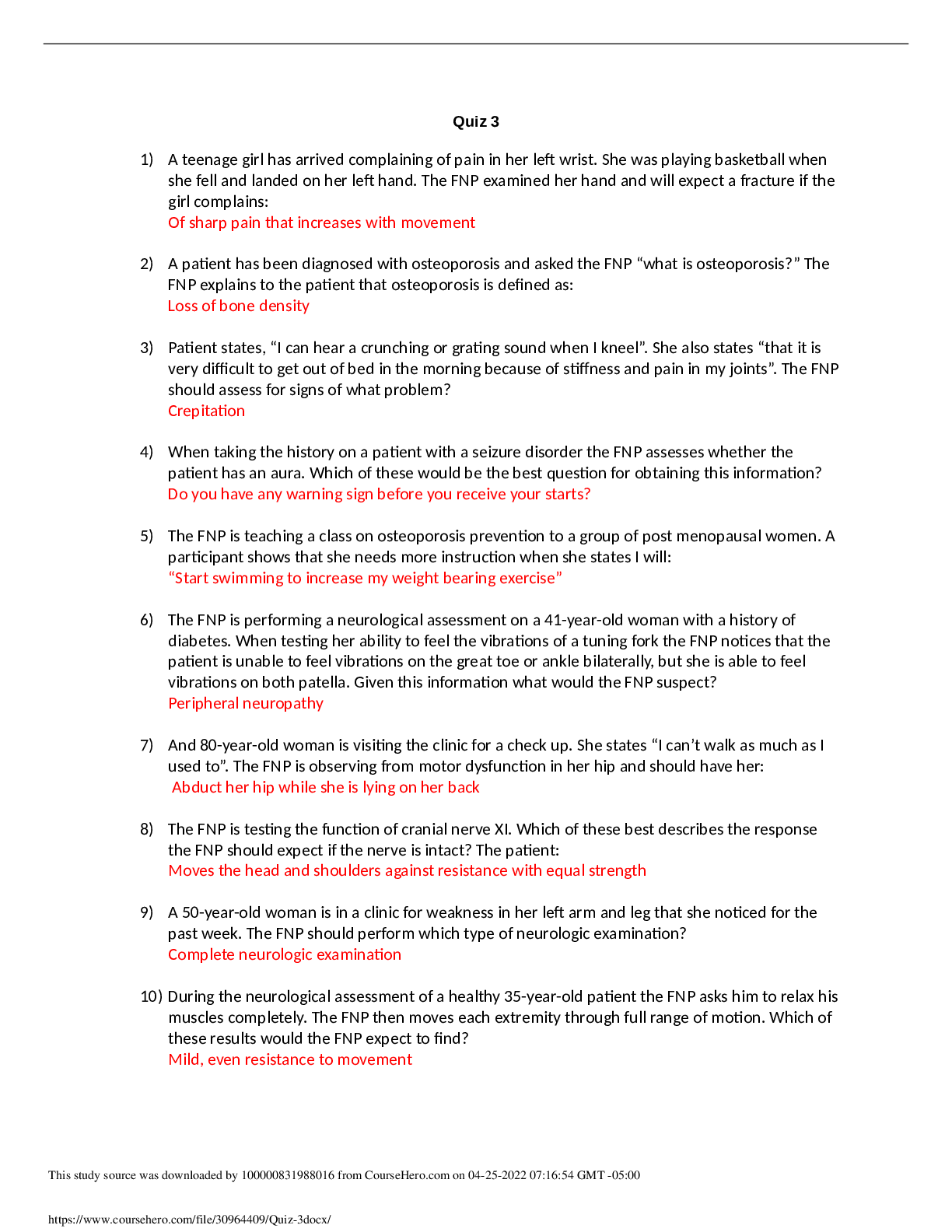
Also available in bundle (2)
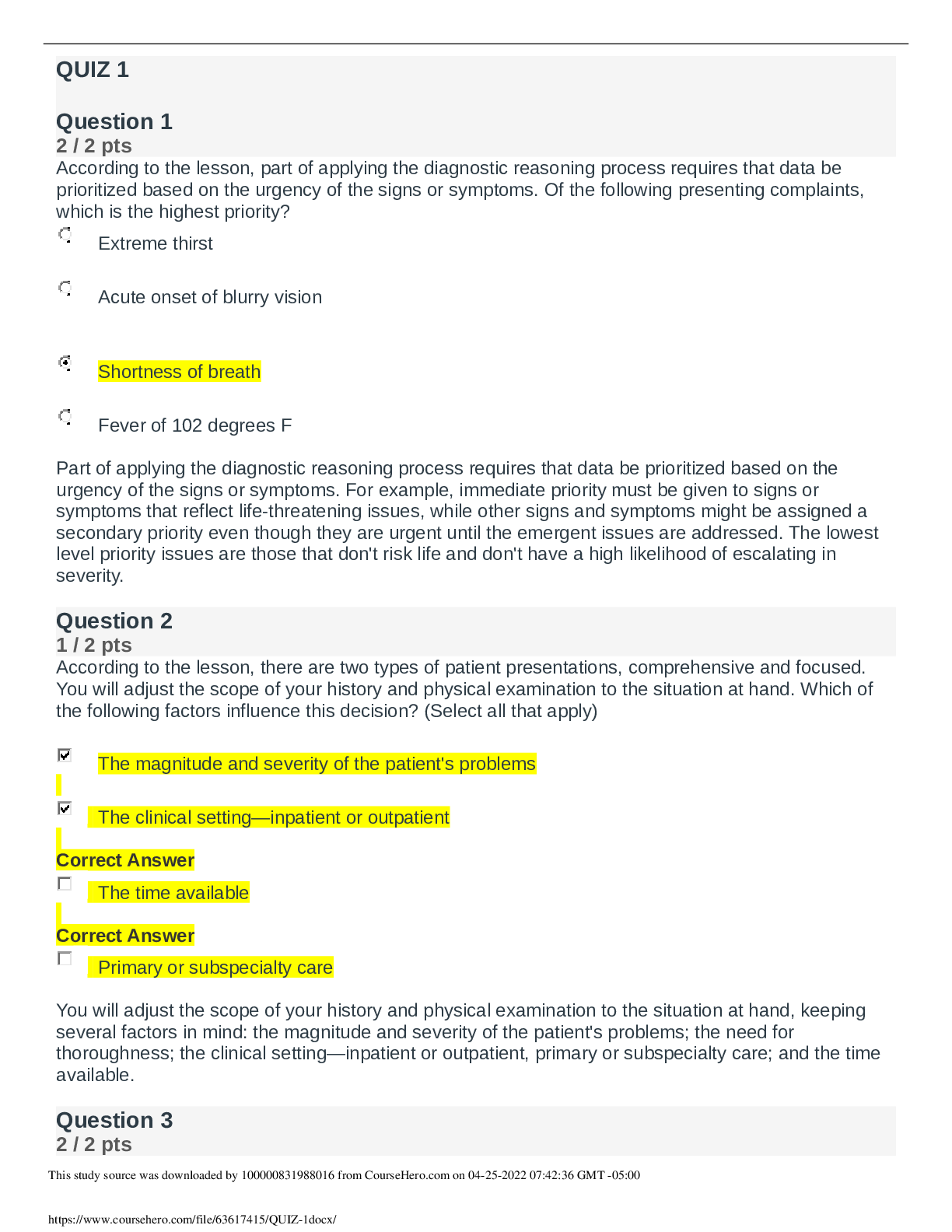
NR 509 Week 1, 2, 3, 4, 5, 6, 7 & 8 Quiz - Question and Answers. All Graded A
Quiz 3 1) A teenage girl has arrived complaining of pain in her left wrist. She was playing basketball when she fell and landed on her left hand. The FNP examined her hand and will expect a fracture...
By Nutmegs 2 years ago
$30
8

NR 509 EXAMS PACKAGE.ALL ANSWERS ARE VERIFIED AND GRADED A PLUS
NR 509 TEST BANK.ALL ANSWERS ARE VERIFIED AND GRADED A PLUS.NR 509 TEST BANK.ALL ANSWERS ARE VERIFIED AND GRADED A PLUS
By Nutmegs 2 years ago
$20
4
Reviews( 0 )
Document information
Connected school, study & course
About the document
Uploaded On
Apr 25, 2022
Number of pages
3
Written in
Additional information
This document has been written for:
Uploaded
Apr 25, 2022
Downloads
0
Views
102

.png)
.png)
.png)
.png)
.png)
.png)
.png)
.png)
.png)
.png)
.png)

.png)
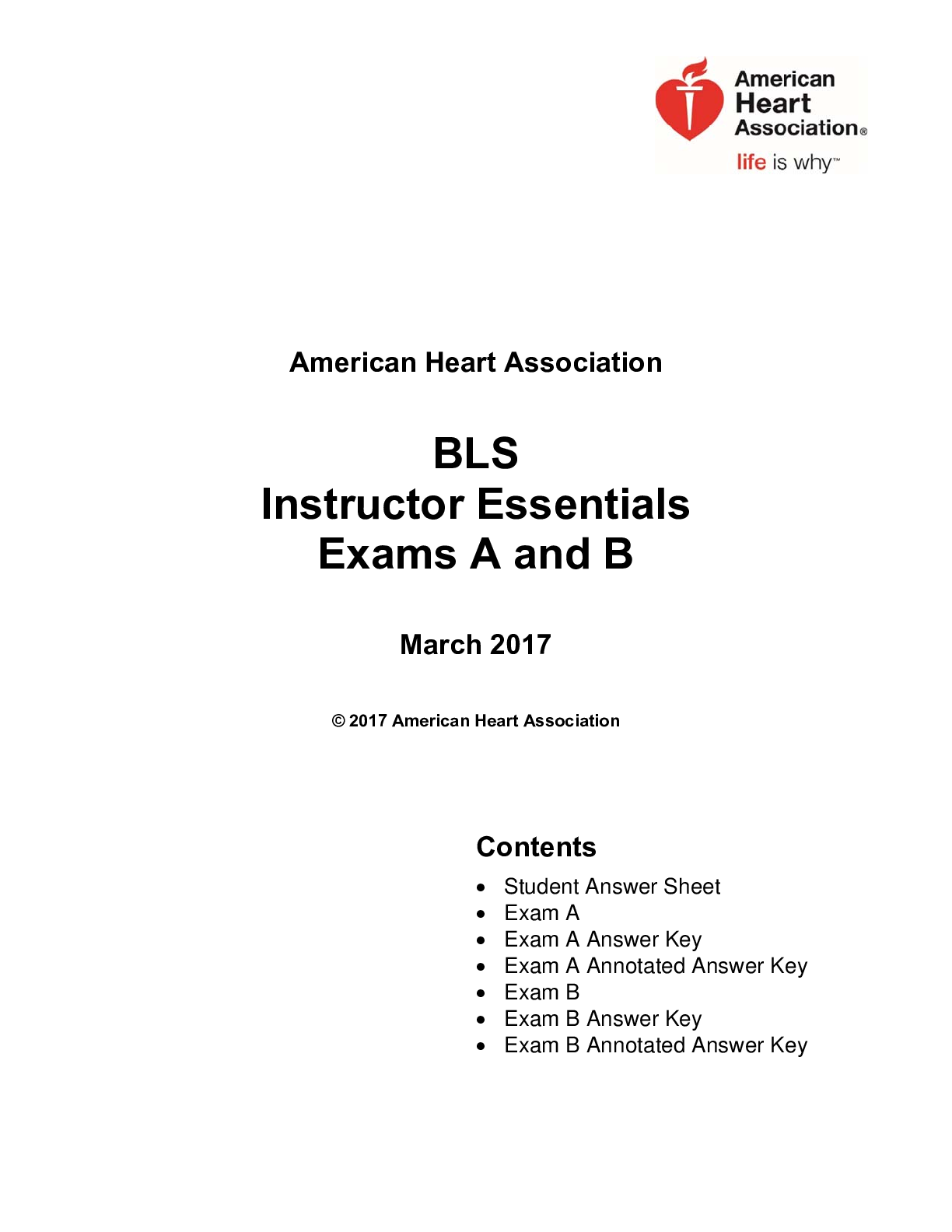
.png)
.png)
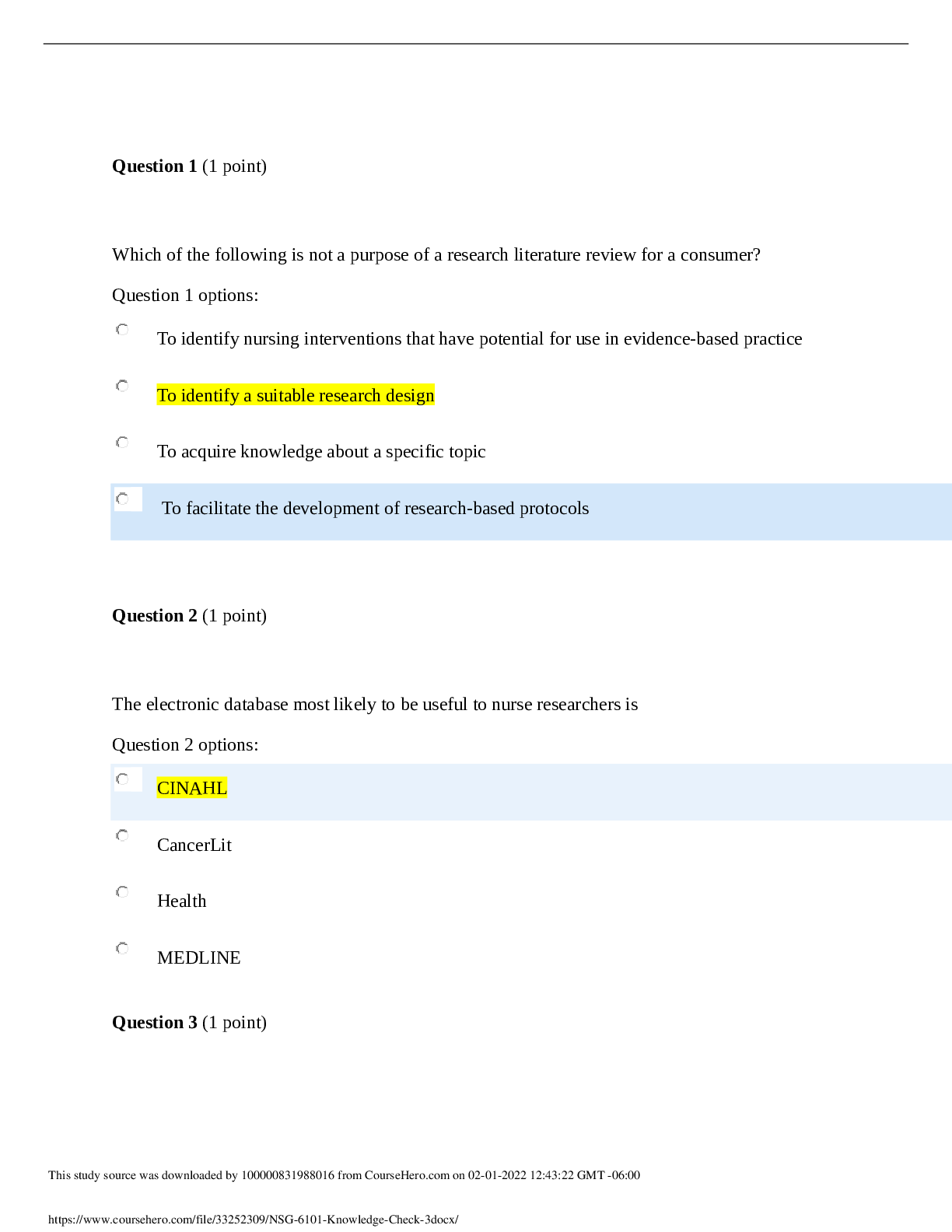
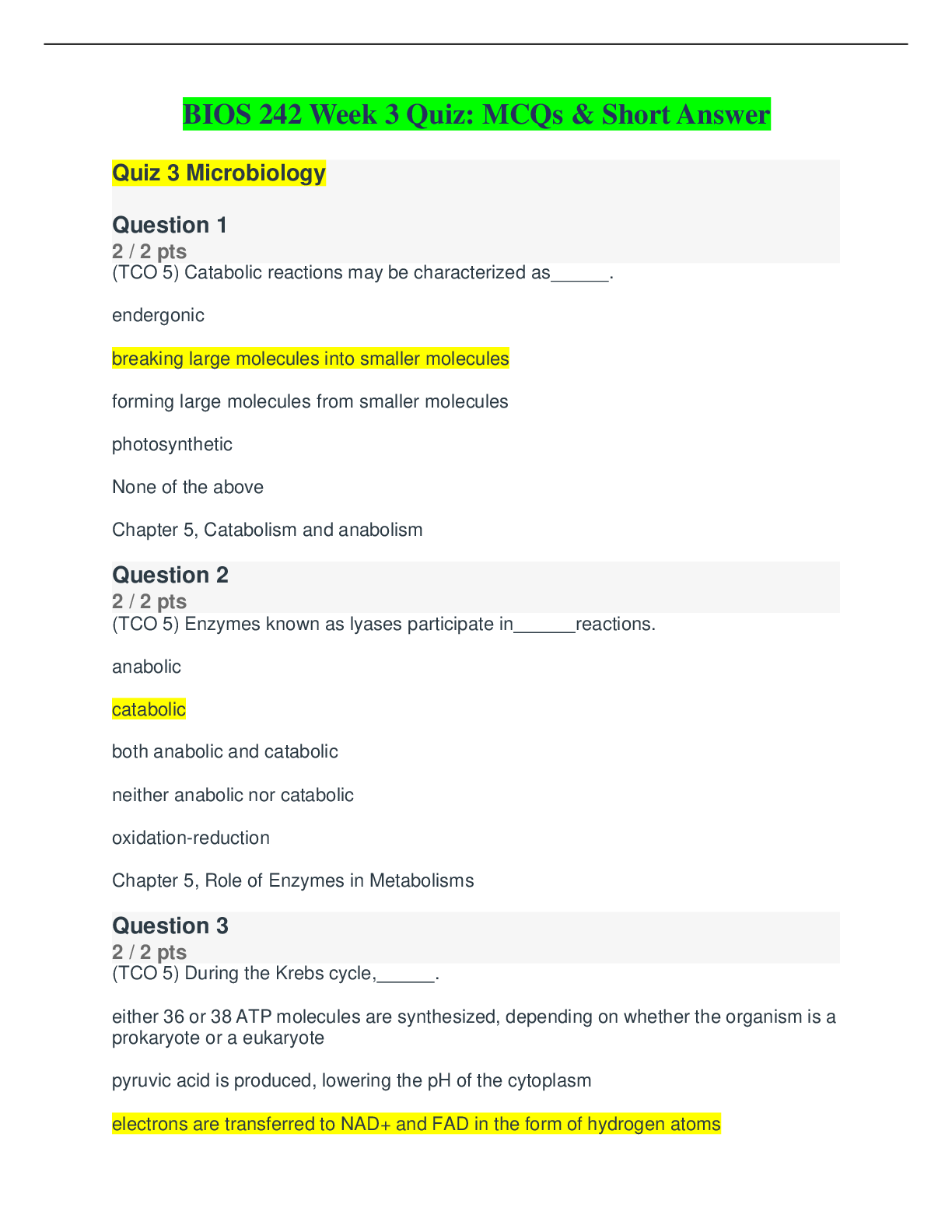
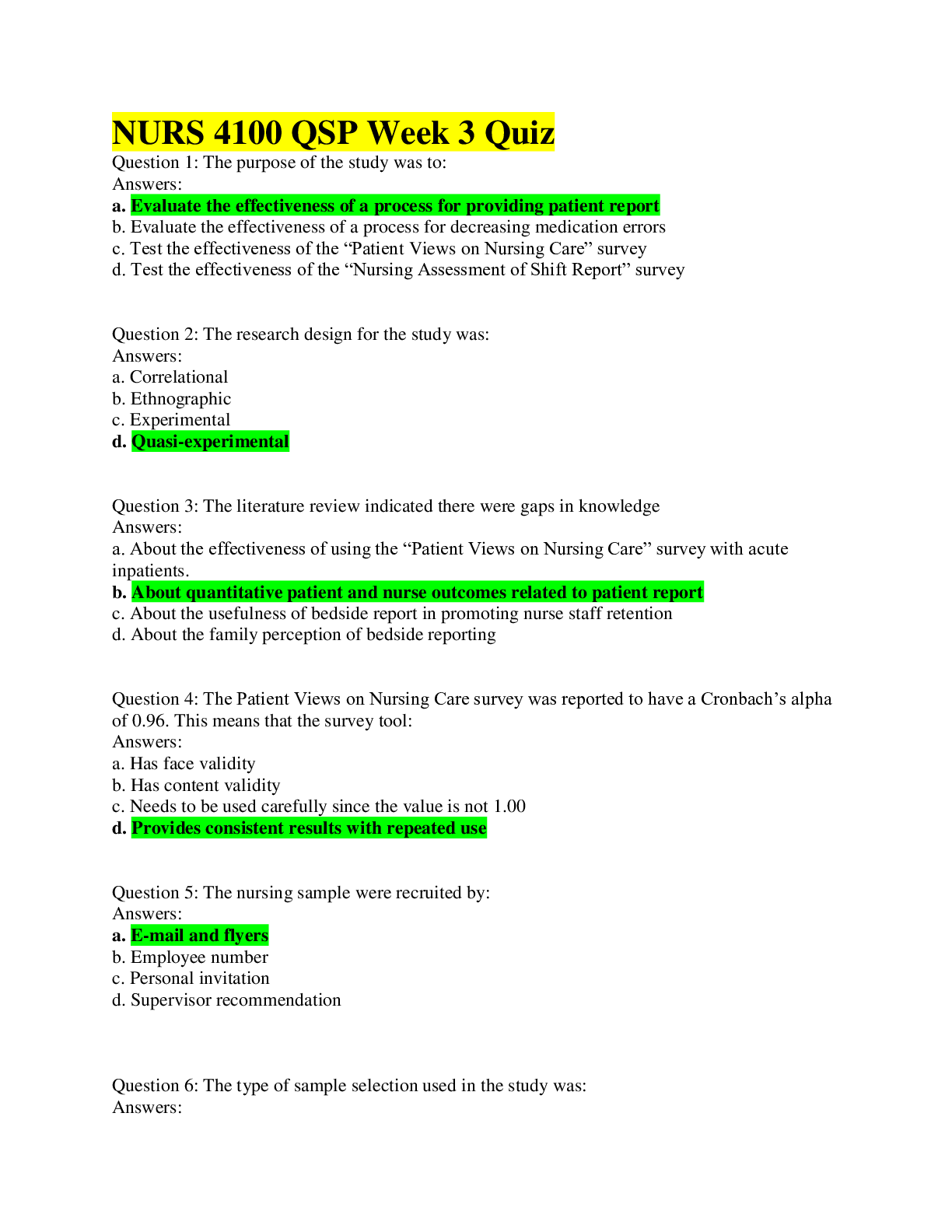

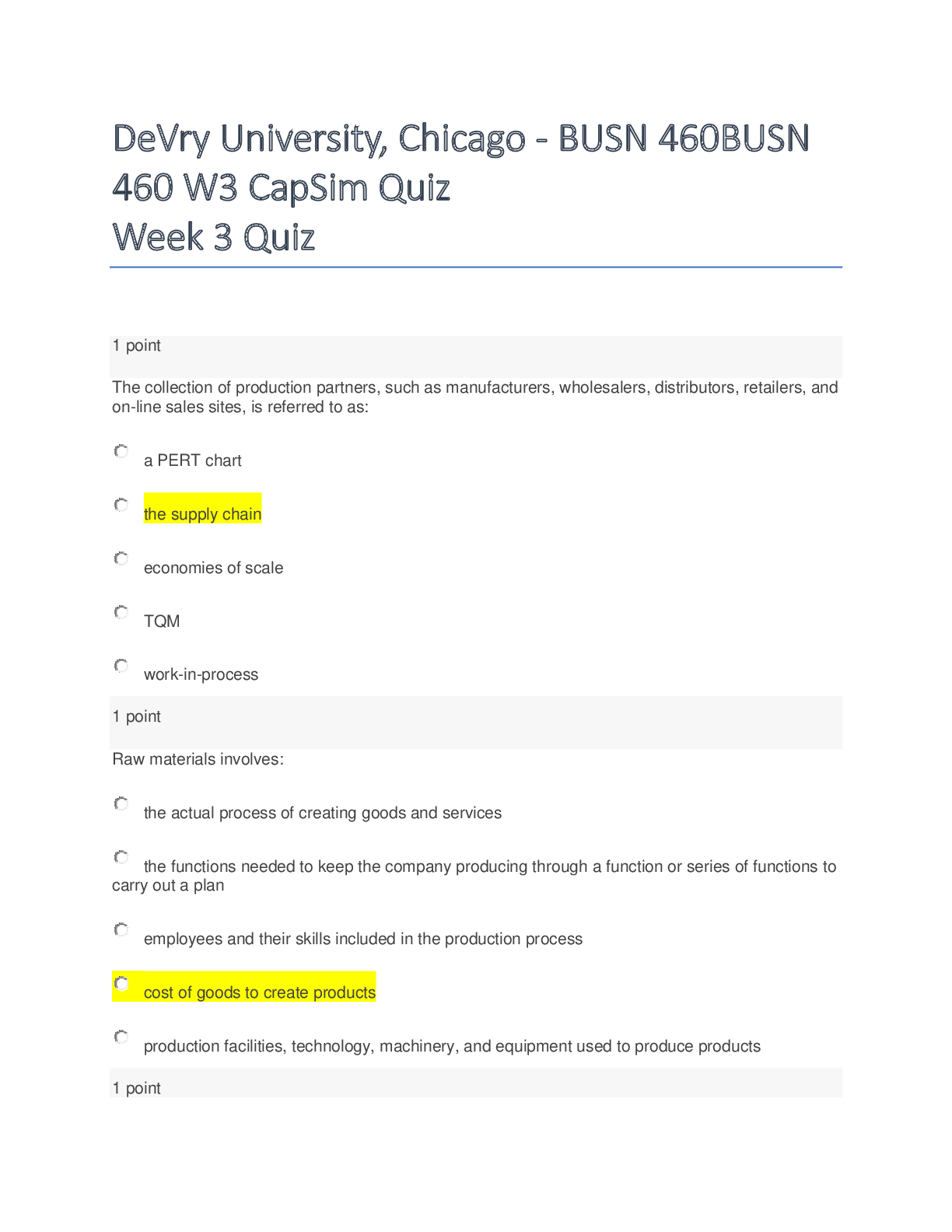

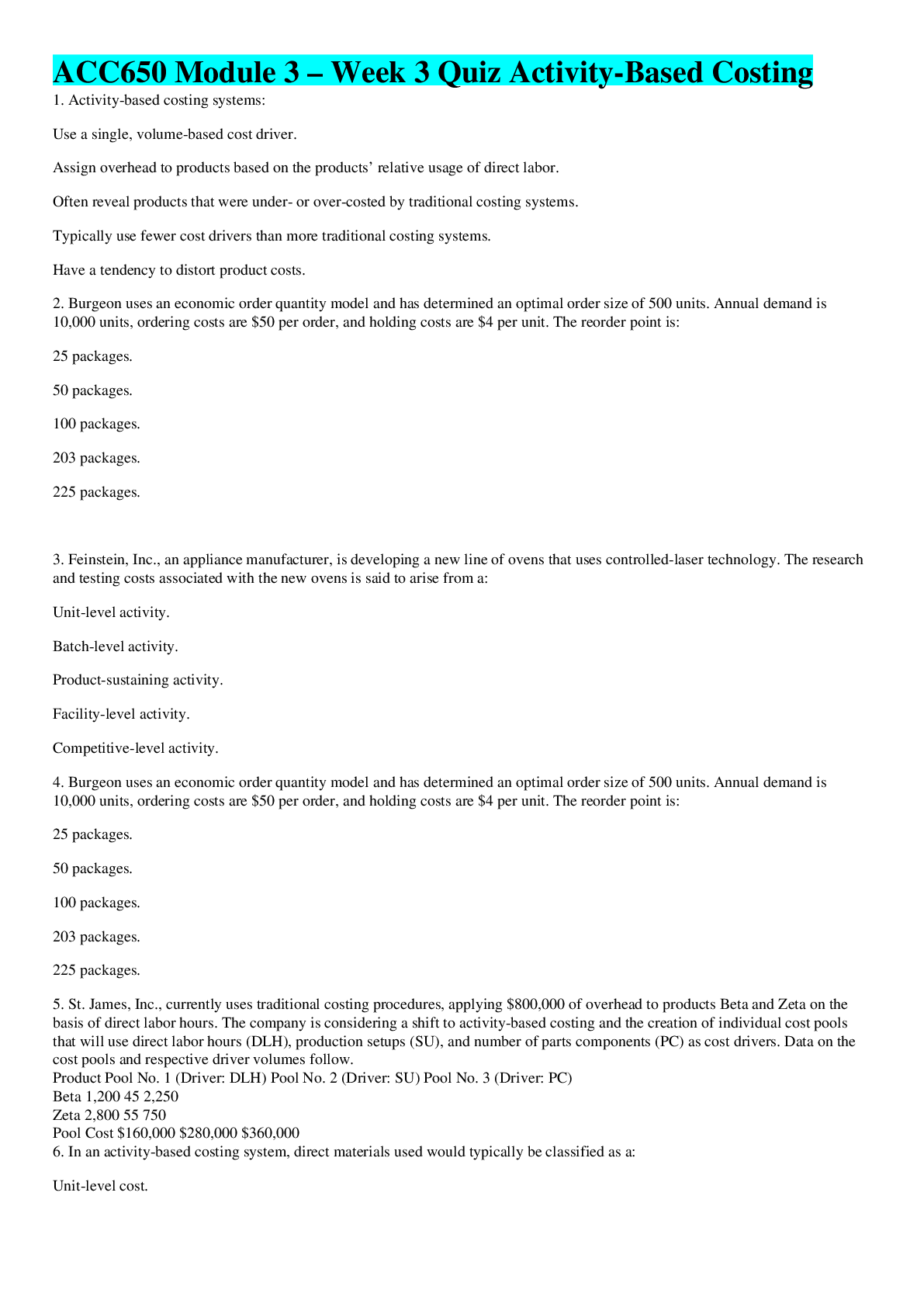
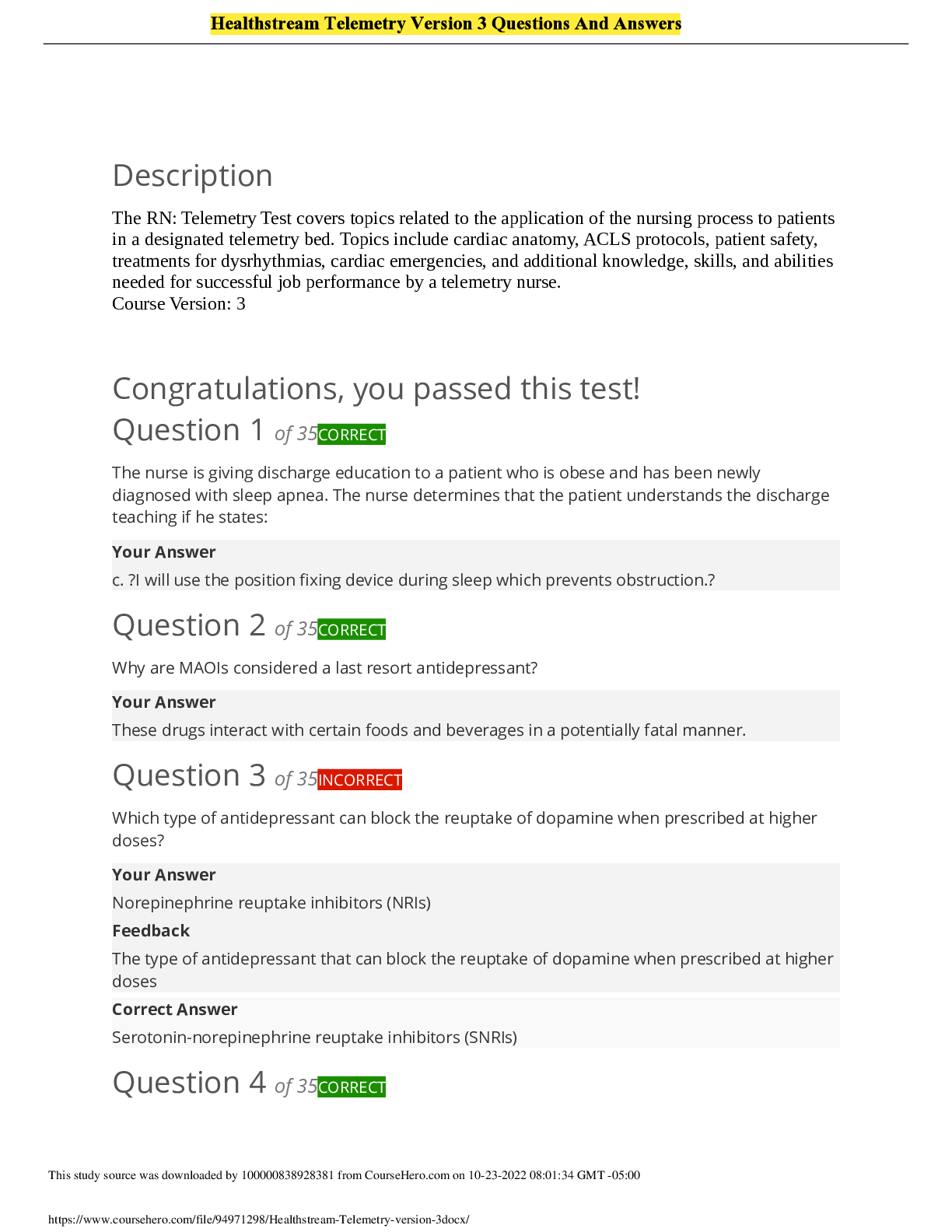
.png)
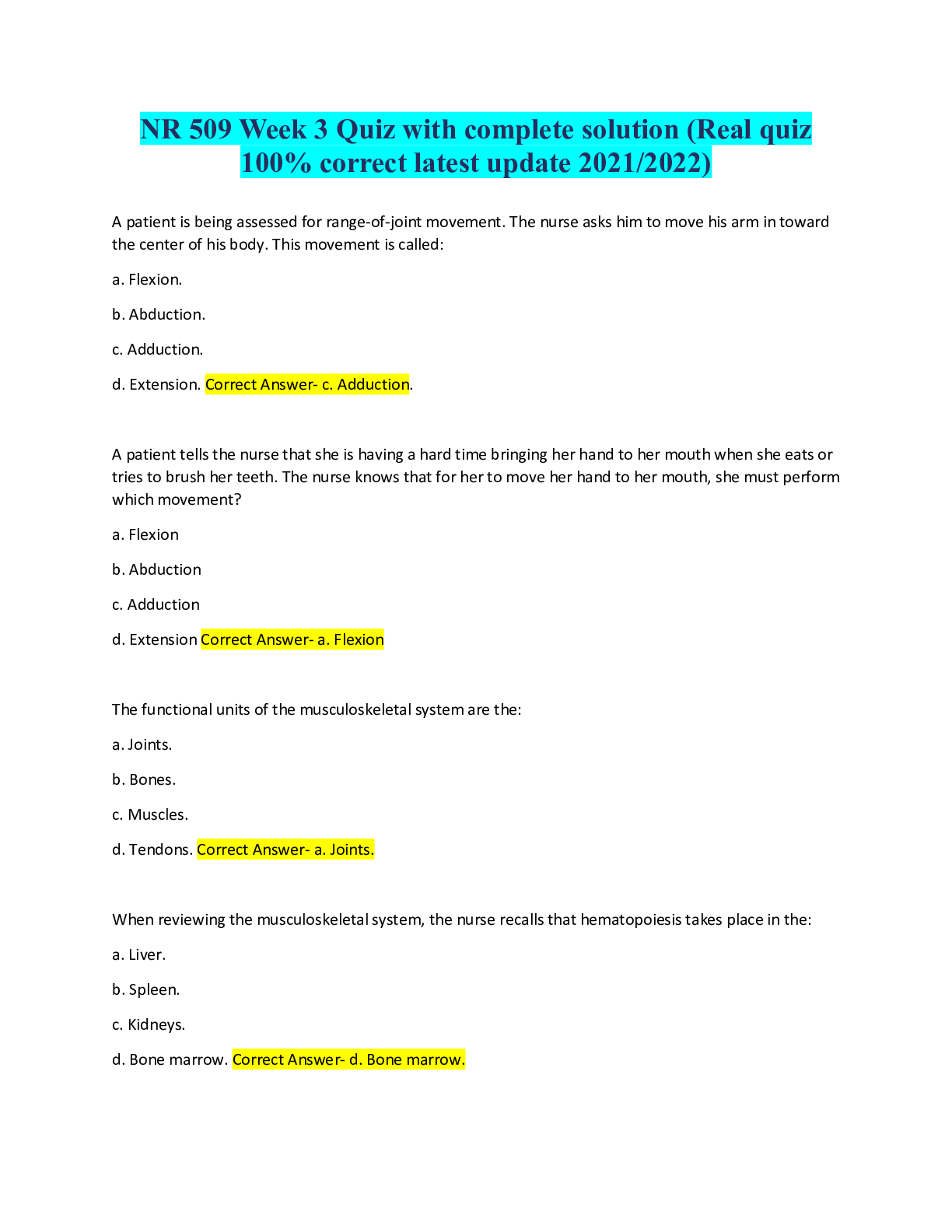
.png)
